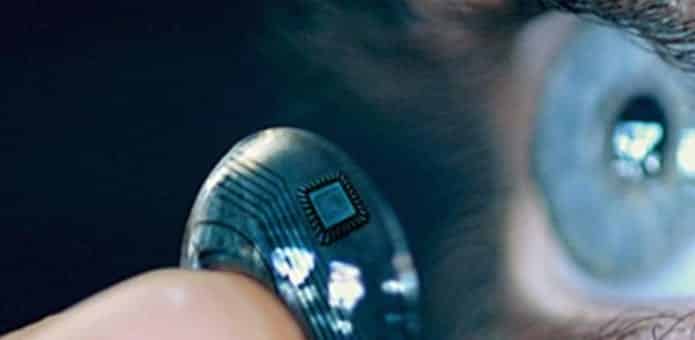Scientists discover new polymer coating that turns contact lenses to computer screens
Scientists at the University of South Australia’s Future Industries Institute (UniSA) have developed a new polymer coating material that can turn contact lenses into displays.
The team behind the invention says that the technology could be used in many applications in the emerging wearables sector. Instead of impractical smart glasses, the user would have all the information they need displayed right within the eye through a lens.
According to the “proof of concept” research on a polymer film coating, it conducts electricity on a contact lens, with the potential to build miniature electrical circuits that are biologically safe to be worn by a person.
The breakthrough is the result of two years of work and a decade of wider research. UniSA researcher from the FII, Associate Professor Drew Evans, who is leading the research, said the technology was a “game changer” and could provide one of the safest methods to bring people and their smart devices closer together.
“We’re talking about anything from a simple sensor that can measure the amount of glucose in your blood through to actually creating electronic displays so rather than having something like a pair of glasses that’s acting like a computer, you can actually generate images directly on your contact lens,” Evans said.
“We have always known that our film coating technologies had potential for many applications and now we have taken that a step further by proving that we can make biocompatible, conducting polymers at the nanoscale and grow them directly on a contact lens, ” he added.
It’s interesting that Evans mentions glucose monitoring, as Alphabet has been working on a lens designed exactly for that.
Alphabet’s lens is being tested by Verily, previously known as Google Life Sciences, but apparently won’t provide any wider functionality beyond tracking glucose levels.
However in this case, the polymer material can be used to make anything from single-purpose health sensors to possibly complex screens for displaying information and images.
“We’ve proven that these materials go together and the next phase of the project is to make them stick and make them robust,” Evans said. “The sky’s the limit and the work we’re doing with our industry partner aims to give them a game-changing technology. Obviously the time frame to go from where we are now to each of these different applications is unknown but it’s the first step towards being able to do a lot of that.”
The researchers are working with UK contact lens maker Contamac, hoping to get the technology from lab to practical applications and large-scale manufacturing.
“The excitement from the industry point of view is that this opens up a range of new opportunities for their businesses,” Evans said. “The next big leap is to develop complementary technologies to read the information transmitted by the conducting polymers. What is really significant is that the materials we are developing are not only safe but also have the potential for a range of personalised health monitoring applications that could make life simpler for people struggling with chronic health problems.”
The complete proof of concept research results have recently been published in ACS Applied Materials and Interfaces.
